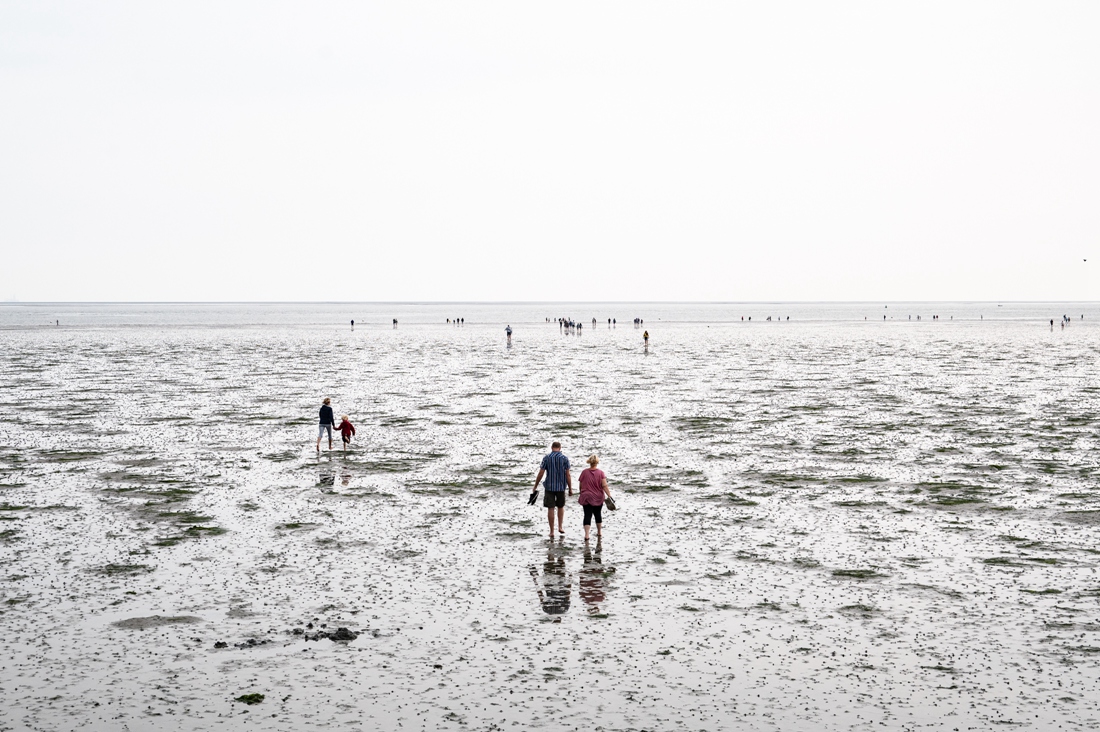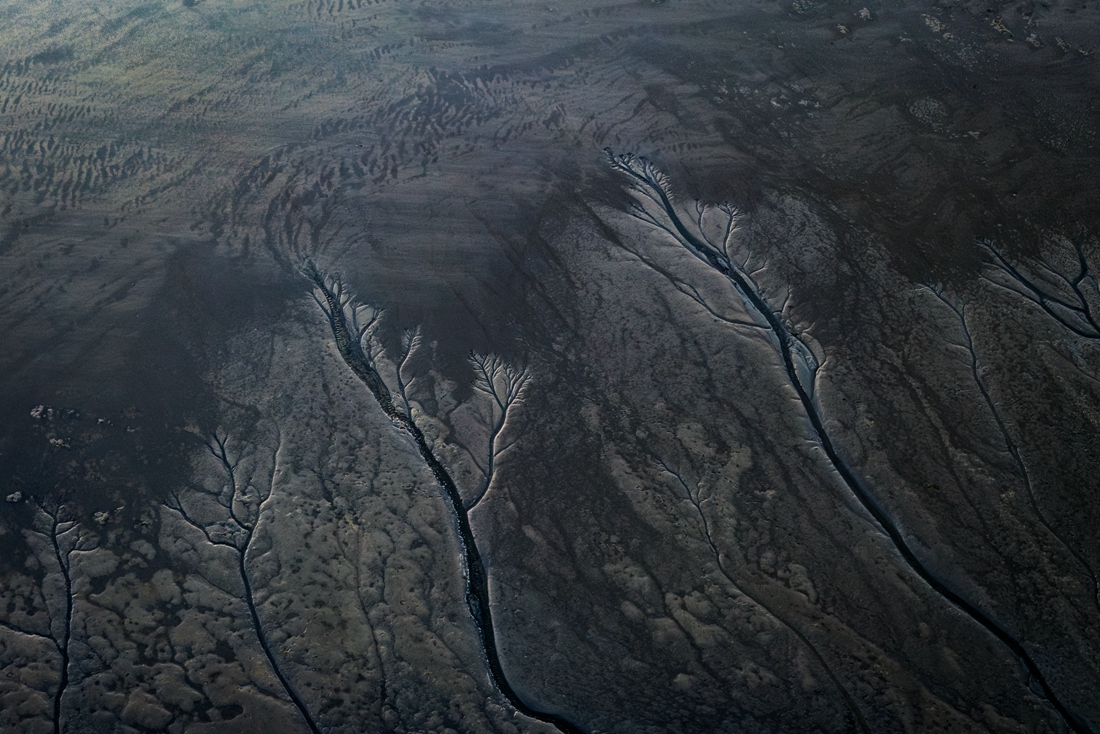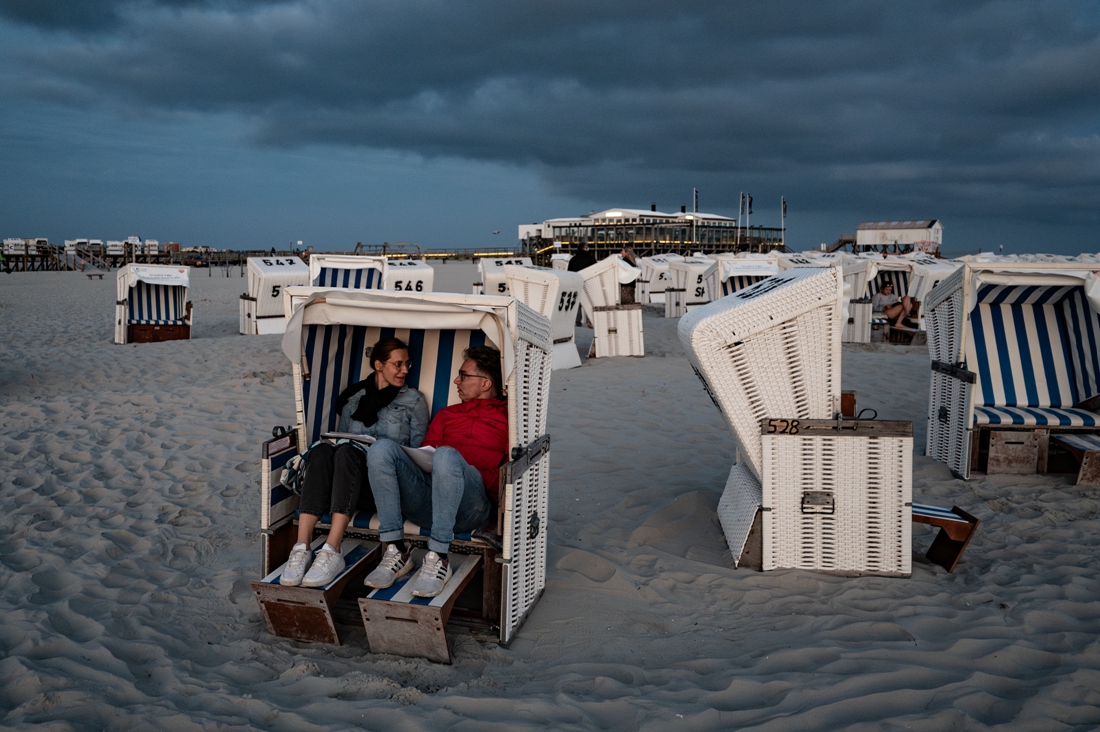Tideland
Text and photos by Alessandro Gandolfi
Abridged by Syharn Shen (沈思含)
Tideland
Text and photos by Alessandro Gandolfi
Abridged by Syharn Shen (沈思含)

Mud hiking at low tide reveals the Wadden Sea's shifting landscape. Once an island, Büsum has evolved through centuries of storm surges, land reclamation, and dike construction.
Arriving by ferry at Schiermonnikoog, the "island of the grey monks," tourists eagerly capture its flat yet charming beauty. This Dutch island, once home to a monastery, is now a serene retreat known for its expansive beaches, cycling routes, and small car-free town. Established as the Netherlands' first national park in 1989, Schiermonnikoog attracts 300,000 visitors annually. But its most remarkable feature is its movement – maps from eight centuries ago show it was two kilometers farther north. This shift is driven by wind and tides, a phenomenon common to the North Sea islands across the Netherlands, Germany, and Denmark.
These shifting landscapes are part of the Wadden Sea, a dynamic ecosystem where islands emerge and vanish. Known as "Waddenzee" in Dutch and "Wattenmeer" in German, it is a vast intertidal zone spanning from the Netherlands to Denmark. Over centuries, the sea has reshaped dunes into islands, creating an ever-changing environment that millions of migratory birds depend on. Scientists regard it as one of Europe's last great natural landscapes, where salt marshes, tidal channels, and sandbanks shimmer under the evening light.

At sunset, low tide carves intricate patterns in the Wadden Sea's vast mudflats. This ever-changing landscape, stretching across the Netherlands, Germany, and Denmark, became a UNESCO World Heritage site in 2009.
Beyond its scenic appeal, the Wadden Sea is a biodiversity hub and a testing ground for sustainable environmental management. It shelters over 10,000 plant and animal species, including Europe's highest bird population. But climate change poses a dire threat—rising sea levels and warming waters are disrupting ecological balances. Wading birds will have less time to feed, while shifting temperatures alter fish and mollusk populations.
Visitors like Fabi Fuhro, a German tourist camping in Denmark, recognize the urgency of protecting the Wadden. "A place like this must be defended and protected at all costs!" he insists. This commitment is reflected in the Wadden's UNESCO World Heritage status (designated in 2009 for German and Dutch areas, 2014 for Denmark) and international agreements restricting intensive fishing, oil exploration, and excessive tourism.

Two friends relax after dark in a Strandkorb, the iconic hooded beach chair of the North Sea. Here, the Wadden Sea recedes for miles at low tide, inviting visitors to explore its vast mudflats.
At the Seal Rehabilitation and Research Centre in Pieterburen, Netherlands, conservationists like Rosanna Toma care for injured and orphaned seals. "Seals eat fish, fish eat shrimp, and shrimp eat plankton. If something in this chain breaks, the whole ecosystem suffers," explains Marco Boshoven, one of the center's managers. Climate change threatens even the plankton at the base of this food web.
The Wadden Sea has long been a battleground between nature and human settlement. At the Ribe Viking Centre in Denmark, costumed reenactors depict medieval life in this ever-changing landscape. "Over the centuries, the Wadden Sea destroyed entire villages," says Magnus, a reenactor, as archaeologists uncover remnants of lost communities. Meanwhile, Danish farmer Klaus Refslund Hansen, working near the coastline, notes how "sand and clay sediments have made this land fertile for generations. The salt from seawater even helps disinfect the soil."

In the Wadden Sea, Lahnung—wooden pole structures—create square fields that protect levees and promote land reclamation by trapping sediment and silt.
On Sylt, a German island known for luxury tourism, scientists at the Alfred Wegener Institute (AWI) study climate change's impact on the Wadden. Petra Kadel introduces visitors to "mesocosms"—giant seawater tanks simulating the Wadden environment to test how species react to rising temperatures and changing salinity. Marine ecologist Christian Buschbaum warns that the North Sea has warmed nearly twice as fast as the global ocean average, pushing invasive species northward.
A barefoot walk through the mudflats at low tide is one of the best ways to experience the Wadden. Near Germany's Westerever lighthouse, a guide named Peter leads visitors across the seabed, revealing mussels, snails, crabs, and worms that sustain the region's birdlife. "The tide moves 15 million cubic meters of water four times a day," he explains. "We have to be careful—sea fog can roll in within minutes, and high tide rises quickly."
The Wadden Sea is a place of beauty and transformation, but its survival depends on careful stewardship. With thousands of years of natural evolution at stake, its defenders—from scientists to tourists—insist it must be preserved for future generations.
Contact Us | Plan a Visit | Donate
8 Lide Road, Beitou 11259, Taipei, Taiwan
886-2-2898-9999
005741@daaitv.com
©Tzu Chi Culture and Communication Foundation
All rights reserved.
